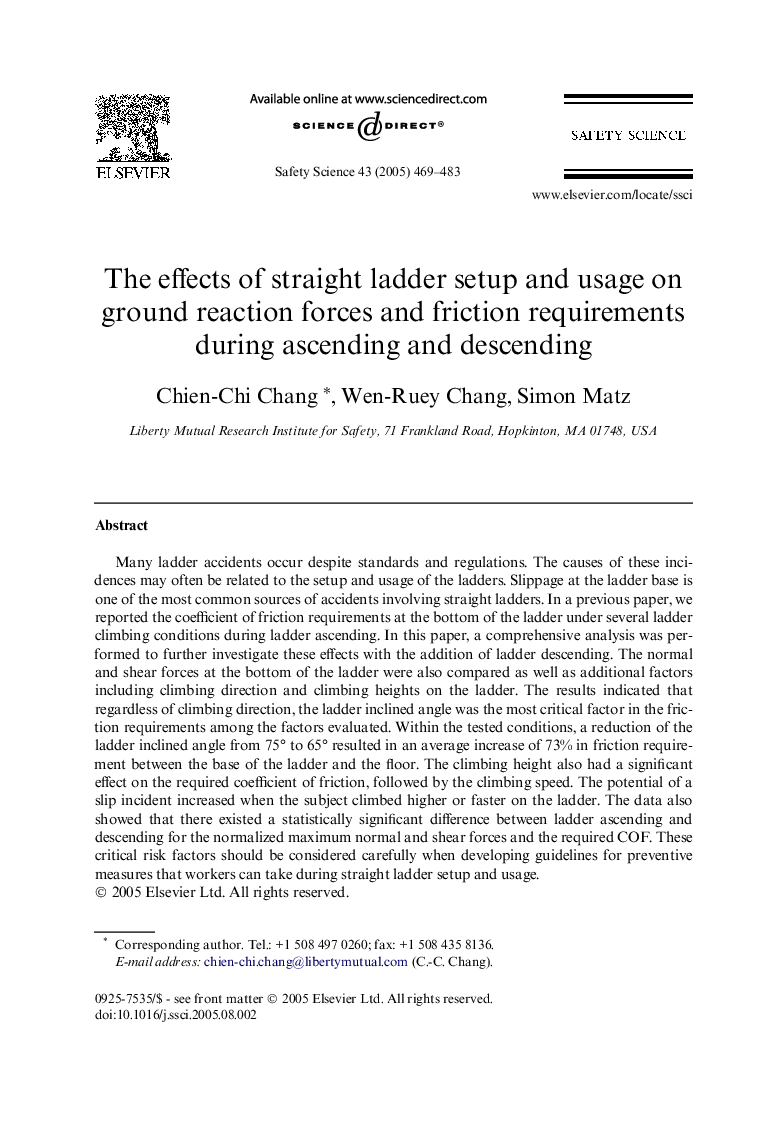| Article ID | Journal | Published Year | Pages | File Type |
|---|---|---|---|---|
| 10374366 | Safety Science | 2005 | 15 Pages |
Abstract
Many ladder accidents occur despite standards and regulations. The causes of these incidences may often be related to the setup and usage of the ladders. Slippage at the ladder base is one of the most common sources of accidents involving straight ladders. In a previous paper, we reported the coefficient of friction requirements at the bottom of the ladder under several ladder climbing conditions during ladder ascending. In this paper, a comprehensive analysis was performed to further investigate these effects with the addition of ladder descending. The normal and shear forces at the bottom of the ladder were also compared as well as additional factors including climbing direction and climbing heights on the ladder. The results indicated that regardless of climbing direction, the ladder inclined angle was the most critical factor in the friction requirements among the factors evaluated. Within the tested conditions, a reduction of the ladder inclined angle from 75° to 65° resulted in an average increase of 73% in friction requirement between the base of the ladder and the floor. The climbing height also had a significant effect on the required coefficient of friction, followed by the climbing speed. The potential of a slip incident increased when the subject climbed higher or faster on the ladder. The data also showed that there existed a statistically significant difference between ladder ascending and descending for the normalized maximum normal and shear forces and the required COF. These critical risk factors should be considered carefully when developing guidelines for preventive measures that workers can take during straight ladder setup and usage.
Keywords
Related Topics
Physical Sciences and Engineering
Chemical Engineering
Chemical Health and Safety
Authors
Chien-Chi Chang, Wen-Ruey Chang, Simon Matz,
